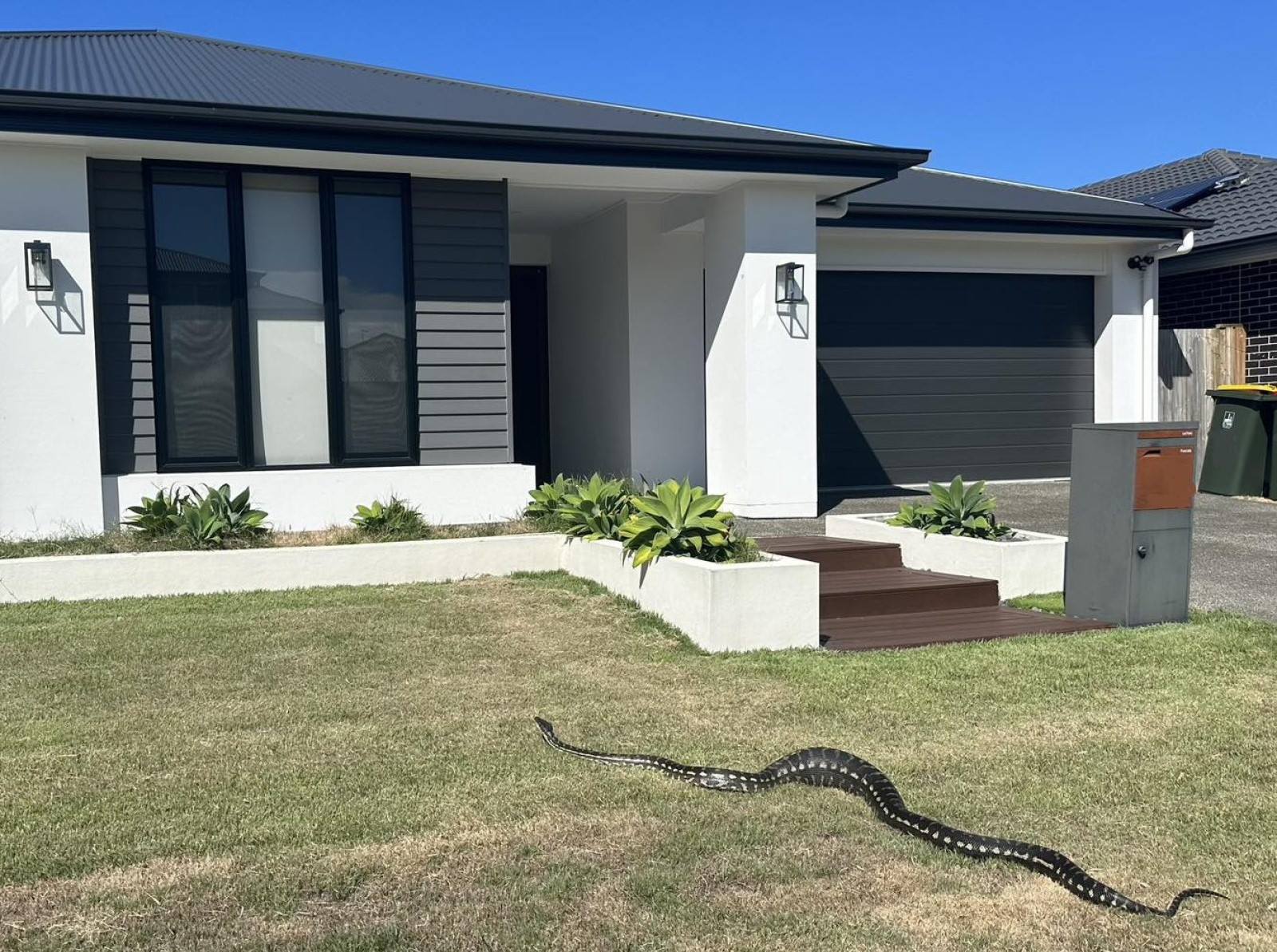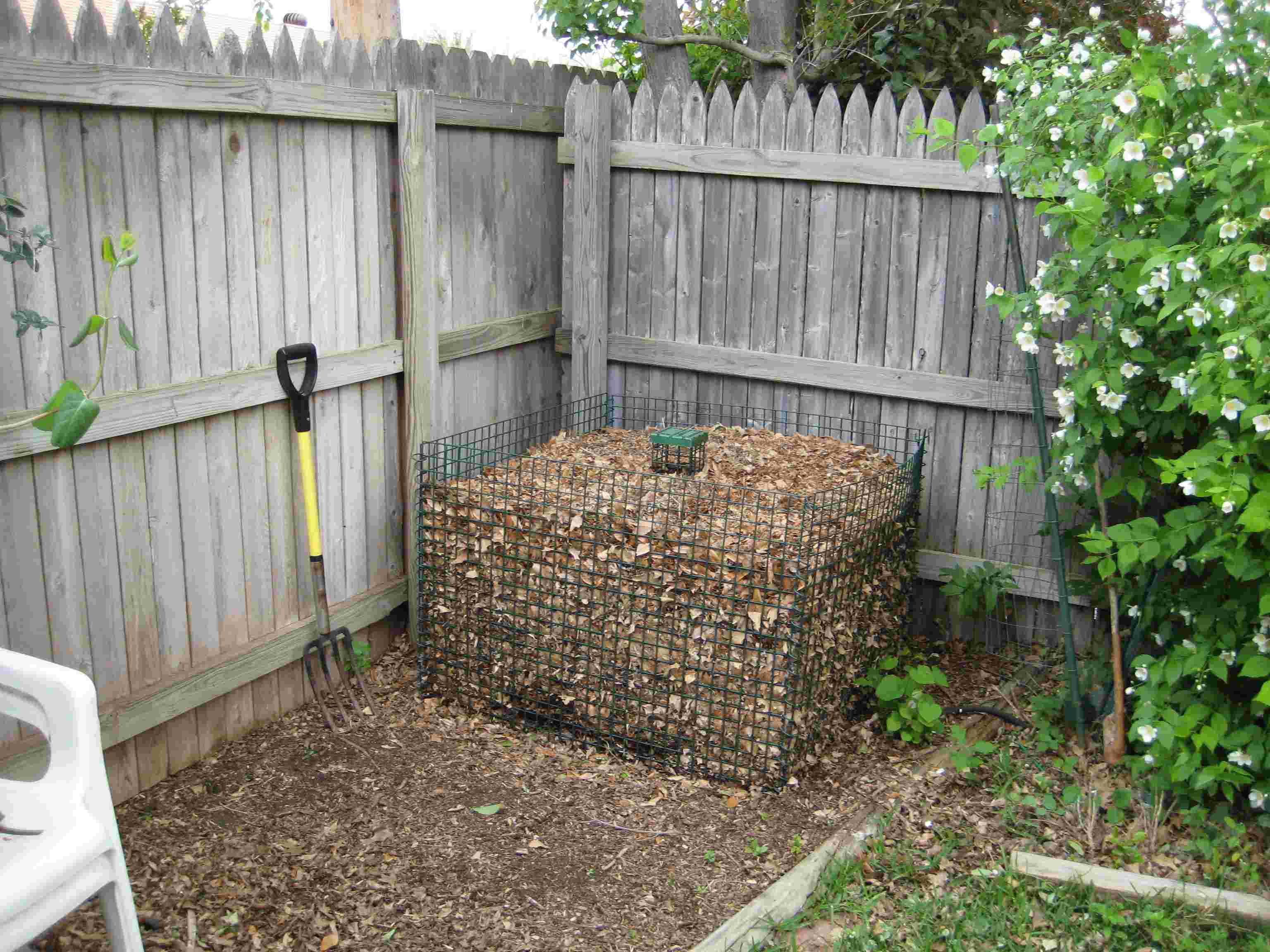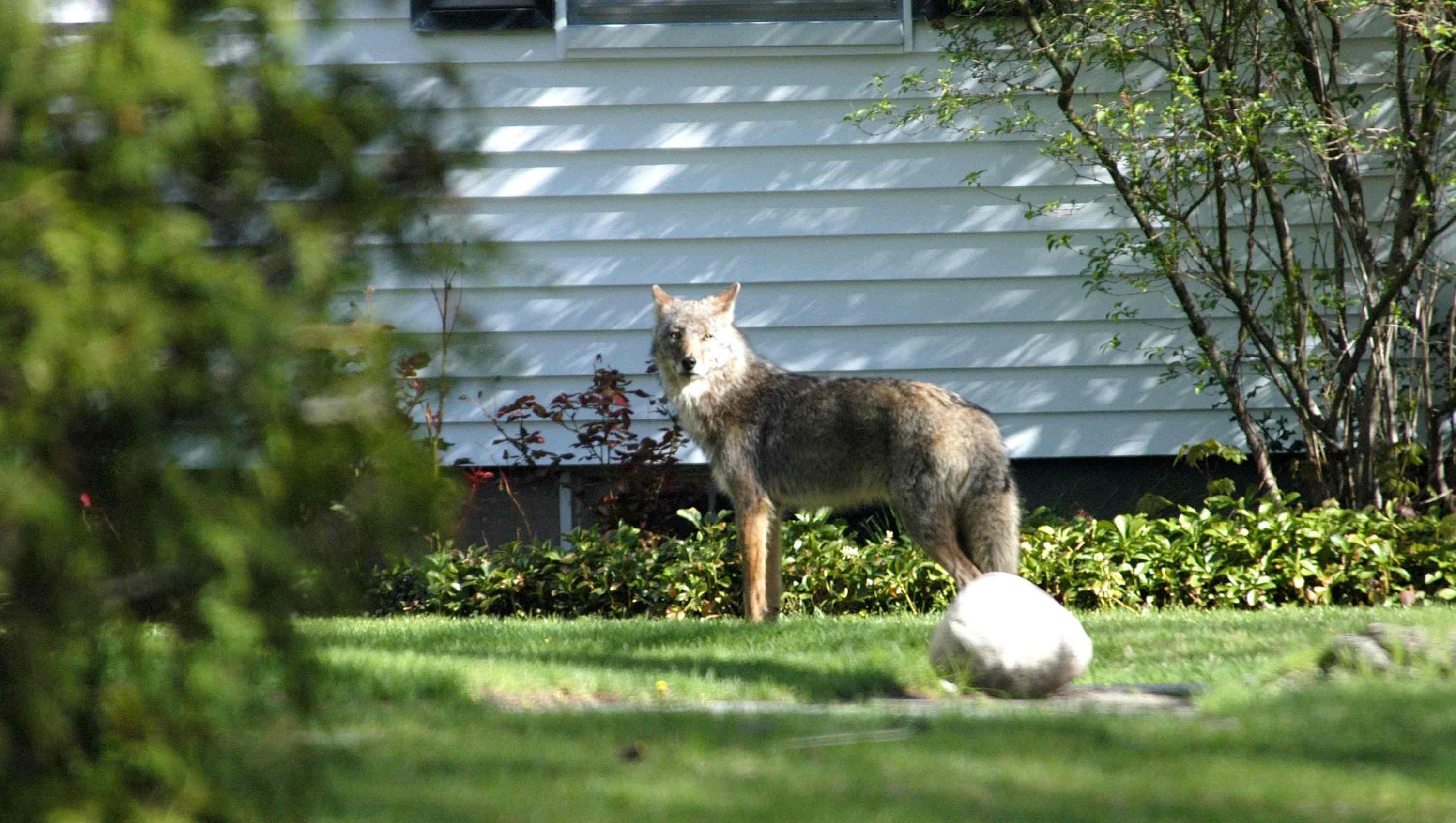Home>Gardening Tips and Tricks>How To Find A Snake In Your Backyard


Gardening Tips and Tricks
How To Find A Snake In Your Backyard
Published: August 5, 2023
Learn effective problem-solving techniques to find a snake in your backyard with our step-by-step guide.
(Many of the links in this article redirect to a specific reviewed product. Your purchase of these products through affiliate links helps to generate commission for Chicagolandgardening.com, at no extra cost. Learn more)
Table of Contents
Introduction
Discovering a snake in your own backyard can be an unnerving experience. While snakes are a crucial part of the ecosystem and often play a valuable role in controlling pests, encountering them in close proximity to your home can cause understandable concern. Understanding how to find a snake in your backyard and what to do when you encounter one is key to ensuring both your safety and the well-being of the snake.
Snakes are incredibly diverse creatures, with different species exhibiting a wide range of behaviors and habits. Some are venomous, while others are harmless. Some are nocturnal, while others are diurnal. By familiarizing yourself with snake behavior and habitat preferences, you can increase your chances of successfully identifying and locating a snake in your backyard.
Throughout this article, we will explore various methods to find a snake in your backyard and the precautions you should take during the search. Additionally, we will discuss what to do if you come across a snake and how to coexist with them in a safe manner.
Note that snakes should never be handled unless you have extensive knowledge and experience. It is always recommended to contact a local wildlife professional to handle snake removal and relocation, especially if you are unsure of the species and potential danger it may pose.
So, if you’re ready to dive into the fascinating world of snakes and learn how to find them in your very own backyard, let’s get started!
Understanding Snake Behavior
Before you start your search for a snake in your backyard, it’s important to have a basic understanding of snake behavior. This knowledge will not only help you in identifying potential snake habitats but also in gauging the potential risk associated with different snake species.
Snakes are cold-blooded creatures, which means that their body temperature is dependent on the temperature of their surroundings. They are typically more active during warmer months and tend to hibernate or become less active during colder periods.
It’s important to note that snakes are generally shy and prefer to avoid encounters with humans. They will typically only bite if they feel threatened or cornered. Most species of snakes are non-venomous and pose no serious threat to humans, but it’s always important to exercise caution and treat all encounters with snakes as potentially dangerous.
Snakes have a wide range of habitats, depending on the species and their geographic location. Some common snake habitats include grasslands, forests, deserts, wetlands, and suburban areas. Understanding the specific habitat preferences of snakes in your region can help narrow down your search area.
Additionally, snakes have specific behaviors that you should be aware of. Some species are excellent climbers and can be found in trees or bushes, while others prefer to stay on the ground or hide in burrows. Some snakes are primarily active during the day (diurnal), while others are more active at night (nocturnal).
By understanding these basic behaviors, you can start to develop a strategy for finding snakes in your backyard. Keep in mind that patience and observation will play key roles in your search. Snakes are elusive creatures, and it may take some time before you spot one.
Now that you have a better understanding of snake behavior, let’s move on to identifying potential snake habitats in your backyard.
Identifying Snake Habitats
When it comes to finding a snake in your backyard, one of the most effective strategies is to identify the potential snake habitats within your property. Snakes are highly adaptive creatures, capable of thriving in a variety of environments. By understanding their habitat preferences, you can narrow down your search area and increase your chances of finding a snake.
Here are some common snake habitats that you should be on the lookout for:
- Grass and vegetation: Snakes often seek refuge in tall grass, shrubs, and overgrown vegetation. These areas provide ample cover and offer protection from predators. Be cautious when walking through tall grass or dense vegetation, as snakes may be lurking beneath.
- Rock piles and crevices: Snakes are adept at finding shelter in rock piles, stone walls, and crevices. These areas offer cool, dark spaces that snakes can use for rest and protection. Check any rocky areas in your backyard, such as retaining walls or stone structures.
- Logs and fallen trees: Fallen logs and decaying trees can provide ideal hiding spots for snakes. These areas offer protection and cover, as well as potential sources of food. Take a closer look at any fallen trees or logs in your backyard, paying attention to hollowed-out areas or openings.
- Water sources: Snakes are often attracted to water sources, such as ponds, streams, or bird baths. They may come to drink or search for prey. If you have any water features in your backyard, examine the surrounding areas for signs of snake activity.
- Gardens and compost piles: Snakes can be drawn to gardens and compost piles due to the abundance of insects and small rodents that they prey on. Pay attention to these areas, especially if you notice an increase in pest activity.
Remember, snakes are masters of camouflage and can blend seamlessly into their surroundings. Take your time to carefully inspect these potential snake habitats, keeping an eye out for any signs of snake presence. Don’t forget to also explore areas around your backyard, such as nearby woods or undeveloped land.
In the next section, we will discuss how to check common snake hiding spots in your backyard.
Checking Common Snake Hiding Spots
When searching for a snake in your backyard, it’s important to thoroughly check the common hiding spots where snakes tend to seek shelter. Snakes are skilled at finding hidden areas that provide protection and safety. By inspecting these spots, you can increase your chances of locating a snake.
Here are some common snake hiding spots to focus your search on:
- Underneath objects: Snakes often seek refuge under objects such as rocks, logs, debris, or garden equipment. Lift and carefully examine these items, keeping a safe distance, to see if a snake is hiding underneath.
- In and around structures: Snakes may find their way into structures such as sheds, garages, or basements. Check any gaps or cracks in the structure where a snake could enter or hide. Be cautious when searching these areas and consider seeking professional help if you suspect a snake is inside.
- In burrows: Many snake species create burrows or utilize abandoned burrows of other animals. Look for openings in the ground, mounds of dirt, or areas with loose soil that could indicate a snake burrow.
- Beneath vegetation: Snakes often hide beneath dense vegetation to seek shade and protection. Carefully inspect any thick bushes, shrubs, or dense plantings in your backyard. Consider using a long stick or tool to gently lift the vegetation to avoid direct contact.
- Up in trees or on branches: Some snake species are excellent climbers and may be found resting on tree branches or hiding in foliage. Look up and carefully scan the trees in your backyard for any signs of a snake.
As you search these hiding spots, it’s important to take precautions to ensure your safety. Wear sturdy gloves and closed-toe shoes to protect yourself from potential bites or injuries. Use a flashlight or headlamp to illuminate dark areas, especially if searching during the evening or at night.
If you come across a snake while checking these hiding spots, maintain a safe distance and observe the snake from a distance. Do not attempt to handle or provoke the snake, as this can lead to injuries. Instead, make note of the snake’s appearance and behavior, and contact a local wildlife professional for assistance.
In the next section, we will discuss examining signs of snake presence in your backyard.
Examining Signs of Snake Presence
Even if you haven’t directly spotted a snake in your backyard, there may be signs that indicate their presence. By examining these signs, you can gather clues about the presence of snakes and narrow down your search area.
Here are some signs to look out for:
- Shedded skin: Snakes periodically shed their skin as they grow. Finding shed snake skin is a strong indicator that a snake has been in the area. Look for translucent, paper-like skin with a distinct snake shape.
- Snake tracks: Snakes often leave behind tracks in soft soil or mud. These tracks may appear as a series of paired lines or a distinctive wavy pattern. Carefully examine any muddy areas in your backyard for snake tracks.
- Feeding signs: Snakes are carnivorous and leave behind evidence of their feeding habits. Look for areas with an abundance of small prey, such as mice or frogs. Also, check for bird nests or eggshells that may indicate a snake has been hunting in the area.
- Droppings: Snake droppings, also known as snake scat or feces, can provide valuable clues about their presence. Snake droppings are typically cylindrical and may contain undigested prey remains. Exercise caution when examining snake droppings and use gloves or a tool to handle them.
- Slither marks: As snakes move across surfaces, they may leave behind distinct slither marks, especially on dusty or muddy ground. These marks appear as curving lines or S-shaped patterns. Inspect your backyard for any visible slither marks.
Take note of any signs of snake presence you come across. While these signs can indicate the recent presence of a snake, it’s important to remember that they don’t guarantee that a snake is currently in your backyard. These signs can help guide your search and give you a better understanding of the snake’s activity in the area.
In the next section, we will discuss tools that can be used for snake detection in your backyard.
Using Tools for Snake Detection
When searching for a snake in your backyard, using the right tools can greatly assist in your detection efforts. These tools can help you identify the presence of snakes and ensure your safety during the search.
Here are some tools that can be useful for snake detection:
- Snake Hooks: Snake hooks are long, handled tools with a curved or contoured end. They allow you to handle and move snakes from a safe distance without causing harm to the snake or yourself. If you spot a snake in your backyard, a snake hook can be used to gently guide it away or capture it for relocation by a professional.
- Snake Tongs: Snake tongs are similar to snake hooks but have a set of jaws at the end. They allow you to grab and hold a snake securely without exerting excessive force. Snake tongs are useful for safely capturing and removing snakes from your property.
- Flashlight or Headlamp: A flashlight or headlamp is essential for searching in dark or dimly lit areas, such as under rocks, in burrows, or in dense vegetation. Illuminate the area you are inspecting to increase your chances of spotting a snake.
- Binoculars: Binoculars can be handy for observing snakes from a safe distance, especially if they are high up in a tree or in a distant area of your backyard. Binoculars allow you to get a closer look and identify the species without getting too close.
- Cameras or Phone: Having a camera or smartphone with you during your search can be useful for documenting any snake sightings or capturing clear photos for later identification by a wildlife expert.
Always exercise caution and follow safety guidelines when using these tools. Handle snakes with care and respect, ensuring your own safety as well as the well-being of the snake.
Remember, if you are uncertain about the species of the snake or are uncomfortable dealing with it yourself, it is best to contact a local wildlife professional for assistance. They have the expertise and training to handle snake removal and relocation safely.
In the next section, we will discuss the precautions you should take while searching for snakes in your backyard.
Taking Precautions while Searching for Snakes
When embarking on a search for snakes in your backyard, it’s important to prioritize your safety and take necessary precautions. While most snakes are harmless and will try to avoid human contact, there is always the possibility of encountering a venomous snake or triggering defensive behavior. Here are some precautions to keep in mind:
- Wear appropriate attire: When searching for snakes, wear long pants, sturdy closed-toe shoes, and gloves to protect yourself from potential snake bites. Avoid wearing sandals or flip-flops that leave your feet exposed.
- Be cautious with your hands: Avoid putting your hands or feet in places where you cannot see, such as dark crevices or under rocks. Always use a tool or stick to probe and inspect potential snake hiding spots.
- Keep a safe distance: If you spot a snake, maintain a safe distance and avoid provoking or approaching it. Snakes may become defensive if they feel threatened, increasing the risk of a bite.
- Use tools for handling: When handling a snake, if necessary, use appropriate tools like snake hooks or tongs to avoid direct contact. This will minimize the risk of getting bitten.
- Stay vigilant: Continuously scan your surroundings and be aware of your surroundings while searching. Pay attention to any signs or sounds that may indicate the presence of a snake.
- Avoid sudden movements: Sudden and fast movements can startle a snake and trigger its defensive response. Move slowly and calmly to minimize the chances of alarming a snake in your vicinity.
- Do not handle unfamiliar snakes: Unless you have extensive knowledge and experience with snakes, avoid handling unfamiliar snakes. Contact a local wildlife professional for assistance if you need to remove or relocate a snake.
By following these precautions, you can minimize the risks associated with searching for snakes in your backyard. Remember, it’s always best to err on the side of caution and seek professional help if you have any doubts or concerns.
Now that you are equipped with the necessary precautions, let’s discuss what to do if you find a snake in your backyard.
What to Do If You Find a Snake
Coming across a snake in your backyard can be a surprising experience. It’s important to remain calm and follow the appropriate steps to ensure your safety and the well-being of the snake. Here’s what you should do if you find a snake:
- Stay calm and keep your distance: Avoid panicking or making sudden movements. Give the snake plenty of space and maintain a safe distance of at least several feet. This will minimize the risk of startling or agitating the snake.
- Observe from a safe location: Take note of the snake’s appearance and behavior from a safe vantage point. This will help you provide accurate information to a wildlife professional if necessary.
- Do not attempt to handle or provoke the snake: Snakes may bite if they feel threatened or cornered. Do not try to touch, handle, or provoke the snake in any way. Keep children and pets away from the area until the snake has safely moved on or has been removed by a professional.
- Contact a local wildlife professional: If you are unsure about the species of the snake, or if you are uncomfortable dealing with it yourself, it’s best to contact a local wildlife professional or snake removal expert. They have the knowledge and experience to handle and remove the snake safely.
- Follow local regulations: In some regions, certain snake species may be protected or require special permits for handling or removal. Familiarize yourself with the local laws and regulations regarding snakes before taking any action.
- Take steps to prevent future encounters: After the snake has been safely removed or has moved on, consider implementing measures to reduce the likelihood of snake encounters in the future. This may include clearing debris, sealing openings, and removing potential snake habitats from your yard.
Remember, snakes are an important part of the ecosystem and play a vital role in maintaining the balance of nature. It is best to coexist with them in a safe and respectful manner. Avoid unnecessary harm or aggression towards snakes, as they play a valuable role in controlling pests and maintaining biodiversity.
In case of venomous snake bites, seek immediate medical attention and contact emergency services right away. Do not attempt to treat or handle venomous snake bites on your own.
By following these guidelines, you can ensure a safe and responsible approach when encountering snakes in your backyard.
Conclusion
Encountering a snake in your backyard can be a thrilling or unsettling experience, depending on your perspective. However, with the knowledge and understanding provided in this article, you’ll be better equipped to handle such situations responsibly and effectively.
By familiarizing yourself with snake behavior and identifying their preferred habitats, you can narrow down your search and increase your chances of finding a snake if one is present. Take the time to thoroughly check common hiding spots, paying attention to signs of snake activity such as shedded skin, tracks, feeding signs, droppings, and slither marks.
When conducting your search, it’s crucial to take precautions and prioritize your safety. Wear appropriate attire, keep a safe distance, and use the right tools for snake detection. Remember to stay calm, avoid sudden movements, and contact a local wildlife professional if you need assistance.
Lastly, it’s important to respect and appreciate the role snakes play in the environment. They are valuable contributors to pest control and ecosystem balance. If you find a snake, adopt a mindset of coexistence and take steps to minimize future encounters.
Remember, the information provided in this article is intended to be a guideline, and local regulations and snake species may vary. Always consult local wildlife authorities or professionals for specific advice and guidance in your area.
With the knowledge gained from this article, you can navigate encounters with snakes in your backyard with confidence, ensuring your safety and promoting harmony with these fascinating creatures.










